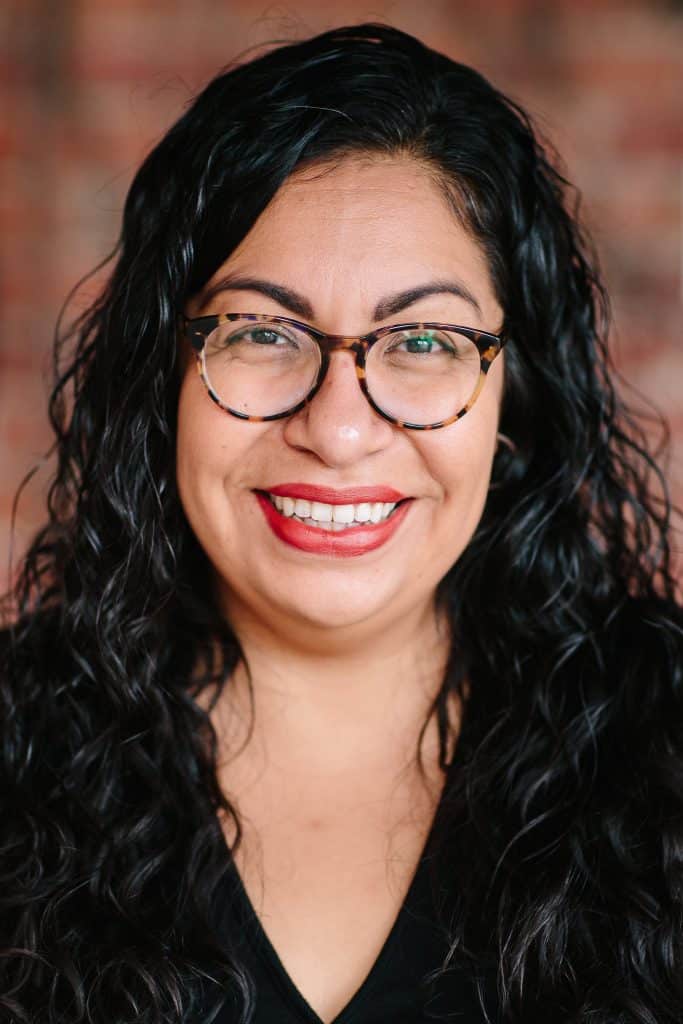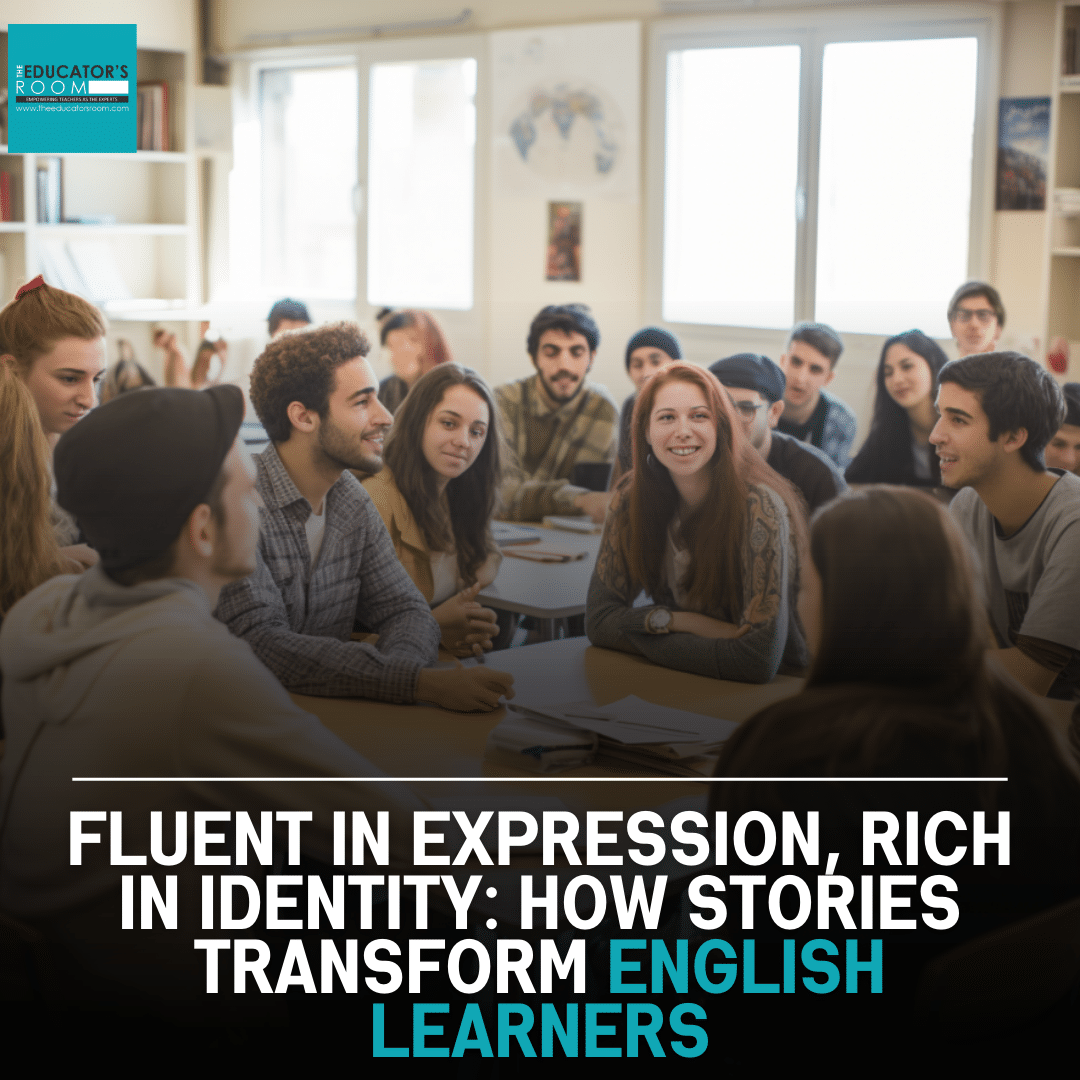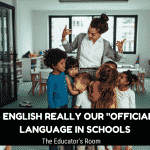English Learners: In the bustling library at Kennedy High School in Richmond, CA, Carlos, a determined senior, recently embarked on an inspiring journey. He was preparing a presentation for the upcoming Latinx Heritage Month Celebration, eager to present options for cultural games that his peers could vote on. He came to me to help him prepare for this moment and practice during a session of our after-school Newcomer Club.
His goal: was to deliver the entire presentation in English. But, as with any significant undertaking, Carlos faced his share of challenges.
Storytelling as a Cultural Lifeline
As Carlos started his speech he confidently declared, “I am presenting this in English for you because I want to practice, please raise your hand to help me if I get a word wrong,” before diving into the explanation of the games. At the outset, Carlos clung tightly to his written script, stumbling over pronunciation, reading too quickly, skipping over words; and struggling to sound like his normal vibrant self. He revealed that he had meticulously translated his script with the help of Google Translate. It was a familiar hurdle, one faced by countless English Learners on their quest to master a new language.
I gently suggested to Carlos, “Google Translate doesn’t talk the way you talk. Let’s just start with a conversation.” Encouraging him to momentarily set aside the script, I asked him to share his personal thoughts and feelings about each game off the top of his head as a way to practice his English. He began to speak about the experiences he had with these games, recounting memories of playing them in Nicaragua with friends and witnessing them as part of community celebrations. Carlos shared what made a game enjoyable, passionately discussing why some felt more complicated to him. The English flowed more fluidly from him because it was grounded in his experiences, his personal connections, and his genuine opinions on the topic. This, I realized, is the essence of storytelling.
Storytelling is not merely a tool for English Learners to navigate the complexities of mastering a new language; it’s a lifeline that maintains their connection to their culture through language. Carlos’s journey mirrors the struggles faced by many in the pursuit of mastering language while preserving their cultural identity. For the 1.2 million English Learners in California, there is limited access to engaging experiences that both develop academic language skills and affirm student heritage.
How My Story Informs My Teaching
As I observe my students navigating the complex terrain of language acquisition and identity, I am reminded of my own quest to claim my voice amidst cultural expectations. My upbringing as the youngest of eight children in a Mexican-American family often put me at odds with my own kin for daring to express my emotions through poetry. Accusations of “acting white” simply for having feelings and wanting to express them stung deeply. In their eyes, my emotional expressions were deemed foreign, incongruent with our Mexican heritage. Yet, I couldn’t help but see the contradiction. Mexicanos are a passionate people, renowned for their rich storytelling culture and emotional depth. Anyone who has ever sung aloud to a Vicente Fernandez song at a family gathering can attest to this truth.
My sanctuary became the notebooks I hid beneath my bed, where I poured my soul into words. But even this refuge was not always safe from intrusion. My secret writings were occasionally discovered and ridiculed by my siblings, who labeled me as “dramatic” or dismissed my heartfelt expressions as mere “acting.” The humiliation I endured during those moments left indelible marks. I became wary of revealing my true self and passions. I embarked on a journey to conform to their expectations, even if it meant concealing my true identity as a writer and poet. The fear of being discovered haunted me even throughout my professional career. I worried that revealing my poetic endeavors would somehow undermine my credibility.
But it is precisely these scars and vulnerabilities from my journey that have become my greatest asset in my work with students, especially those navigating the intricate intersectional landscapes of language acquisition and identity. As a Latinx educator, my approach is to create a space that can be the sanctuary I never had as a teenager while figuring out who I was becoming. What our journeys have in common is the shared desire to find spaces where we can authentically express ourselves and feel truly seen.
Storytelling is the key to making this journey more authentic and accessible for all. The tiny universe that is my classroom serves as both a learning container and a community where students can authentically be themselves, speak their minds, and connect with me and each other as fellow humans. It’s a place where the barriers to self-expression are dismantled, and they can embrace their unique identities without fear.
Building The “Translation” Muscle
As English Learners embark on their journey of acquiring a new language, they grapple with the ongoing challenge of swiftly translating the thoughts in their minds. This is a challenge I intimately understand, having grown up speaking both Spanish at home and English at school. I make it a point to share this aspect of my own experience with my students, letting them know that, just like them, I too struggle to express myself in both languages.
The moments when I freeze are my favorite moments with my students. I’ll be explaining something to them, then out of nowhere I freeze, I forget a word, and the tables turn. “Que pasa miss?” I stop and ask them if they know the word I am thinking of. It becomes like a collective guessing game the group plays as they try to fill in the blanks in my brain. Then when someone guesses it…celebratory cheers erupt. Before we move on there is always a moment when someone says “That happened to me too” followed by an anecdote of the word and nods from the group as we commiserate about the familiarness of that experience.
I love these moments when my students teach me something, they help me, just like they help each other. Other times we have moments when they don’t know the word either and we find it together. We bond over the shared experience of strengthening our “translation muscle,” a skill many of us must develop to navigate a world where we speak more than one language. This mutual learning and support foster a sense of unity and camaraderie among us, transcending linguistic boundaries and reinforcing our shared humanity.
To keep strengthening this “translation muscle” I use bilingual poetry to spark conversations about identity and serve as a springboard for sharing their stories. I pull from sources like The Latinx Poetry Project or young Latinx creators on TikTok who, like me, express themselves in both languages simultaneously. It’s a powerful way to showcase voices that reflect the culture of my students and give them tangible examples of what it looks like to make both languages part of the way you express yourself. Engaging with poetry this way is one of my favorite things because hidden in every poem is a story.
Speaking in the Real World
Storytelling in the classroom is a valuable and low-pressure activity that fosters youth expression without a right or wrong answer. It allows students to feel seen and represented, which is crucial for their self-esteem and readiness to embrace their identity. Storytelling also promotes constructive conversations, particularly beneficial for all students and English Learners. The Stanford Center of Professional Development advocates for peer-to-peer discussions as a means to develop critical communication and language skills. Constructive conversations encourage spontaneous, critical thinking, making it ideal for language learners.
For English Learners, storytelling is an accessible way to start their journey to language fluency, as anyone can be a storyteller. It resonates with those from immigrant families or cultures with rich traditions of oral storytelling, offering a connection to content and peers. I emphasize the sharing of stories that delve into real-life situations or moments where English fluency is crucial or needed. Students talk about navigating bus routes, running errands, posing questions to teachers, and connecting with English-speaking family members who are their age but grew up in the United States. Through storytelling games and activities, I strive to create an environment where they can have fun while practicing English with their friends.
A simple yet profound technique to initiate the culture of storytelling in the classroom is the “micro-story” exercise. In this exercise, students tell short stories of 2-3 minutes in small groups or in pairs in response to fill-in-the-blank prompts. Some examples include: “I am someone who…” or “A time when I felt accepted, was…” or “One thing that is true about me is…” These prompts can unveil the depth of emotions and experiences within our students. Following the sharing of these stories (in whatever language they are most comfortable) I ask for listeners to share a 1 sentence summary in English about what they heard. This technique not only equips students to express themselves but also builds that crucial muscle of translation in real-time. For English Learners translation is not a side quest; it’s a skill they need to navigate the world confidently.
Carlos astutely notes, “I appreciate having others like me who are also learning everything in English. It’s comforting to know I’m not the only one who finds it difficult.” This sentiment captures the essence of our classroom community, where mutual support and understanding flourish. Together, we navigate the challenges of language acquisition, creating a safe space where they can grow as English speakers and find comfort in the knowledge that they are not alone in their journey.
The Case for Year-Round Storytelling
Storytelling should not be confined to cultural months like Latinx Heritage Month. It should be woven into the fabric of learning throughout the year. Every student, irrespective of their background, deserves the opportunity to share their narrative. This inclusivity creates a space where all voices are valued and celebrated. Even the act of educators sharing their own stories can be a powerful catalyst for students. By revealing our humanity, vulnerabilities, and the challenges we’ve overcome, we foster deeper connections with our students. This openness shows them that we, too, have faced struggles and triumphs in our quest for self-expression. The stories that students, like Carlos, share transcend boundaries and help us understand that there is no single “correct” way to be Latinx or to be human. They reinforce the importance of creating spaces where students can claim their voices, express their unique identities, and, most importantly, be seen and heard.
As we celebrate Latinx Heritage Month and beyond, let us embrace the power of storytelling in our classrooms. Let us share our stories with our students, infusing every day of learning with the magic of narratives. By doing so, we not only support English Learners but also cultivate a richer, more inclusive educational environment for all.

Diana Medina is a first-generation Mexican-American educator, poet, and spoken word performer. Her debut poetry collection, Healing Out Loud was released by Alegria Publishing in 2021. She is also a co-author of Amplify Student Voices: Equitable Practices to Build Confidence in the Classroom, a book that introduces Expression-Driven Teaching as a method to center youth voices and achieve academic and social-emotional learning goals. Diana is based in the Bay Area, where she is the Head of Storytelling and Marketing for The Practice Space, a nonprofit that nurtures oral literacy skills for youth and adults. She specializes in working with high school English Learners, fostering oral expression through speech, debate, poetry, and storytelling.







I love this blog post! It’s so interesting to read about how stories can help English learners develop their identity and fluency in expression. I think this is a great way to help students feel connected to themselves and to the world around